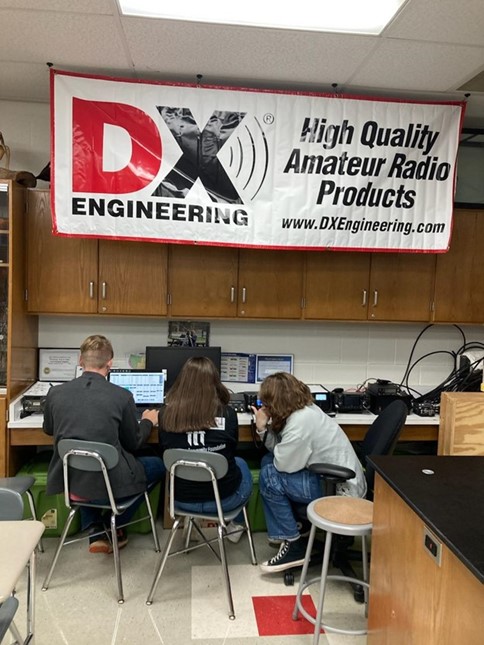“How do I get young people interested in amateur radio?”
It’s a question many of us ask ourselves—and it’s not as straightforward as one may think.
Most of the time, when I ask a young ham what got them involved with the hobby, the answer is one of two things: family or school. Family is an obvious choice. If you’ve grown up around the hobby then you already have a leg up merely by knowing what amateur radio is, along with the benefits of parental support to acquire equipment and travel to hamfests.
School is a less obvious choice. Most schools don’t have amateur radio clubs because they don’t see their value. They can’t imagine the return on investment for all the money spent on equipment, plus the time spent getting the club up and running and hosting meetings. As a result of both this and common practices of school-sanctioned extracurriculars, it’s nearly impossible to start a school amateur radio club without a teacher or administrator who has their license and is involved with the hobby (or even one who knows what the hobby is).
While the path to starting a school amateur radio club is a rocky one at best, amateur radio is actually a perfect fit for a school extracurricular activity. It encompasses STEM (Science, Technology, Engineering, and Math) education and also encourages interaction and soft skill development.

By nature, amateur radio operators love to talk, whether in CW, via digital modes, or by SSB. Stereotypically, young people (particularly teenagers) have little interest in talking to someone via a method other than texting or on Snapchat, but when met by a friendly operator on the other end of a radio sitting in their classroom, suddenly these stereotypes are proven wrong. And amateur radio isn’t only helping students connect with other hams—it’s also giving them something to bond over amongst themselves.
Theoretically, being the archetypal “nerd” in high school usually isn’t much fun. You go through the four years without many friends, hearing sarcastic quips from your classmates, and feeling like there isn’t really a group that you belong to or fit in with. Amateur radio in schools changes this for a large portion of the kids who have the opportunity to be involved with it.
Coming from someone who was the stereotypical nerd in their high school, amateur radio has given my licensed peers and me the means to see beyond all of the temporary cliques and popularity contests that plague one’s high school experience. It has given us a place to focus our energy into doing good for a community. While I may not have a large group of friends at school, amateur radio has always provided me with a community that is more than happy to be the friend group that doesn’t quite exist for me at school.
Despite lacking a typical friend group, since the founding of my school’s amateur radio club I’ve had the opportunity to form connections with like-minded people at my school—both students and educators—and we’ve been able to bond over our mutual enjoyment of a simple hobby.
Having an amateur radio club in a school also facilitates interactions and connections with older members of the community, starting with administrators/educators and expanding out to groups that may have an interest in what the amateur radio club is doing at the school.
Letting students act as liaisons between community groups and the school radio club is an invaluable opportunity that gives them the chance to refine their communication and public speaking skills, teaches them how to interact with older generations, and allows for community connection. For example, we began the process of solidifying a permanent HF station at the school around a year after the club started. Throughout the duration of this project, we’ve had ample student-led communication with our school board about the project. Students were involved every step of the way, from introducing the project to the board and giving them presentations on various aspects of the project to helping with the physical installation of the tower and the setup of the radios.
With projects like these going on in schools, students are acquiring technical skills as well as soft skills (as evident through the dichotomy of both putting in the tower and discussing the project with the school board). Most importantly, students have the opportunity to connect the skills they’re gaining and see how everything they learn connects to something else.
Amateur radio facilitates learning and experimentation, lets students gain hands-on technical experience, and helps young people form connections and friendships that will last a lifetime. When given the opportunity, it can have an immensely positive impact on everyone in a school, from students to educators and administrators.
Editor’s Note: Read about the community effort, including support from DX Engineering, that went into building the K8LPS station in this OnAllBands article.

